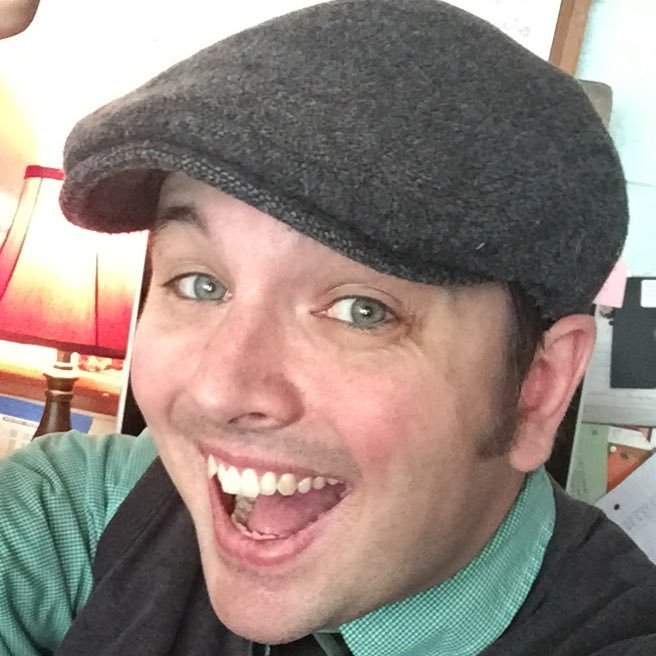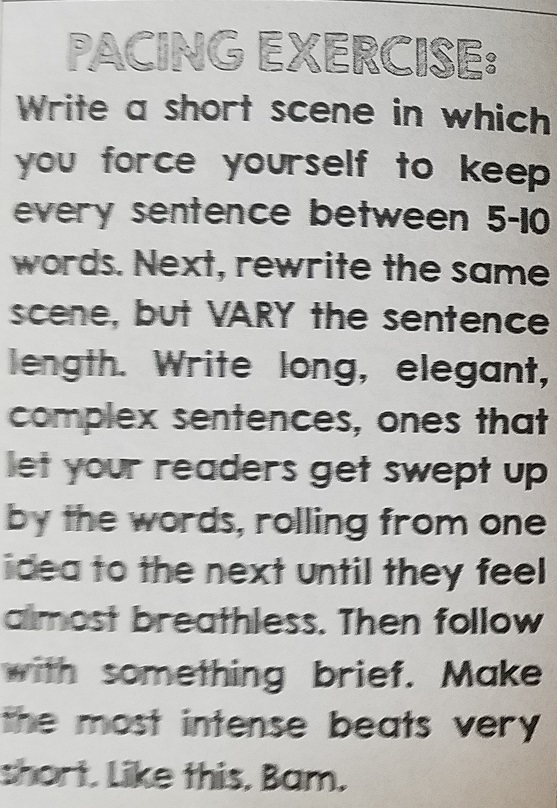William Ritter has personally requested that I put his info in here so…

Twitter – @willothewords
(:

Website – willritter.wordpress.com

I was really excited to be able to go to the Teen Read Week William Ritter Author Talk. I had never been to a book signing or author talk before, and it was really fun to have this experience.
In my opinion, Will ritter is an amazing author! His Jackaby series is one of my favorite books in the world! It was exciting to hear more about my favorite series from the author.
Hopefully you have read my previous post about The Teen Read Week author talk. The author talk was really fun, so it was super exciting to be able to see William Ritter the next day!
At this workshop, William Ritter gave some great writing advice. For example, he talked about how when writing a chapter, instead of the whole book applying to a story map, (you know, Exposition, Rising Action, Climax, that sort of thing.) You have every chapter apply to a story map. You also need to “end with one foot over into the next threshold.” This means that you pretty much start the next chapter in the past chapter. Basically, you have to never satisfy your readers, and let them hunger for the next chapter by leaving a cliffhanger.
His first point was to “Write Like a magician. Leave a trick up your sleeve.”
The first thing magicians do when setting up a trick is patter, or set up. Next is the trick, where you do something impressive. (satisfying. but remember: never leave your readers satisfied.) Next is the prestige, where you do something even MORE impressive!

His next point was that your sentence structure affects pacing. Run-on sentences can make the reader feel out of breath, while short sentences are quick and to-the-point. good writers use this to their advantage, making the mood however they want. He then had us exemplify this technique ourselves by first writing a paragraph of sentences that all have about the same amount of words. then you write the same paragraph, except there are varying amounts o words in each sentence! you can try this at home too!
Next he talked about character creations. Mr. Ritter says that your characters, even just the side characters need to have internal and external motivations. They need to be real, 3D characters who think and feel. An exercise for this is to make a list of three or more internal motivations first. Here is an example:
Bob:
- Hates when someone tells him he is wrong
- Loves telling people they are wrong
- Has anger issues
- Hates boss
- Loves to work
- About to lose apartment
Next you make a list of external conflicts. I’ll do another example with our friend Bob:
- Needs money
- Boss always telling him he is wrong
- If he blows up at work again he’ll get fired.
You can use this at home too!
With character creation, you have to find your character’s motivations and emotions. Characters with only one emotion feel static, but if you give your characters multiple and conflicting traits and conflicts they become more dynamic.
Another helpful hint that Will Ritter mentioned:
Actions speak louder than words. Try indirect characterization and Show, Don’t Tell.
William Ritter
His next point was about how “Diversity Exists.” There is not a country in the world that you cannot find at least one person of a different religion, race, or body type. Make sure to incorporate those ideas into your stories, even if it is hard. If you are a girl writing in the point of view of a boy, it might be harder to write, but it will still be worth it. For example, William Ritter’s Jackaby series was written in the point of view of a girl, even though Mr. Ritter is a guy!
Next he talked about World Building. If you are writing a story based in a place, time, or completely different world than you are used to, it is better to do as much research, (if it is a real place) or imagining as possible. You will not regret it! William gave an example of how there is a character in one of his books who speaks a different language. His friend who spoke the same language usually helped him with the foreign words, but the one time he ended up using google translate, his friend told him it was wrong! By then it was too late, the book was already printed. That is a perfect example of having to make sure your sources are reliable!
Another part of world building is to establish social norms and then break them. It adds a bit of reality if people do not always conform to society. “Not every member of a group adheres to a uniform stereotype. If they did it would be creepy.” Says William Ritter.
You should also know more than you tell in world building. Make maps, chart histories, create restaurant menus. Even if they are never released into the world, it will be worth it, and your creation will seem so much more realistic because you know exactly how this place behaves.
Another piece that kind of contradicted the idea above was that every detail you add should add to the emotional impact. In other words, don’t add any unnecessary details unless it adds to the stories. Anton Chekhov, a playwright, put this thought into an example perfectly:
If there’s a gun on the wall in act one, scene one, you must fire the gun by act three, scene two.
Anton Chekhov
A worldbuilding exercise by William could be to think of something that could drastically change the world. My example is that maybe animals evolved to be the dominant species instead of humans. The next step is to write a paragraph or even a long story about how that change has changed and altered the world. You might even come up with a whole new story idea! (I sure did. check out the example ahead.)
Next he talked about a huge part of all stories: Descriptors and figurative language. His first point was about Synesthesia: a technique that is used for presenting ideas that appeal to more then one sense. Basically, you should use more than one sense to describe something, which will pull the reader in.
He also talked about how figurative language can help set the mood and explain things better. Plus, you can add a bit of comedy with a well-placed simile:
“He moved slowly and carefully, like a turtle on an escalator going the wrong way,” sure sounds better than, “He moved slowly,” doesn’t it?
Sometimes you can say more by saying less though. Simplicity can sometimes be the key, especially if your story is complex.
William Ritter explained that there are two different kinds of descriptive writing: concrete and abstract. What do you want your reader to imagine? I can explain better with one of his examples.
Let’s say you are describing someone’s prison cell. If you were to describe it in a concrete way, you might say, “his cell was only 6×8 and reeked of citrus cleaner,” but if you wanted to describe it in an abstract way you might also say, “His shoebox of a prison was haunted by sordid, lemon-fresh ghosts.”
As you can see, concrete means that your description is more physical, where abstract is more of an imagination involved way to describe something. You have to choose exactly how you want people to think of whatever you are describing.
An activity for this could be to write a scene with as many concrete details as possible. Then go back and rewrite the paragraph, this time with as much figurative language as possible, and try to see how different they are.
Next he talked about a huge part of writing: The Process. “Nothing bad can happen in writing. Write whatever you want. ” He says. You need to “write the vomit draft.” Even if it is ugly in the beginning, when you revise it it becomes beautiful.
The first draft is where you bring clay to the table. Revision is where you sculpt it into something beautiful.
William Ritter
The other part of the process is letting your story go where it needs to. Plans are important, but you don’t have to follow them . the best stories have often ended up going off track from where the author’s intended, but almost always it turned out to be good.
That was the end of the Teen Read Week William Ritter Author Talk+Writing Workshop! I really loved all of these events and encourage you to go to one of these yourself!
For those of you writers out there, feel free to use all of William Ritter’s advice to create your own stories. Let your imagination run wild!

Leave a Reply
You must be logged in to post a comment.